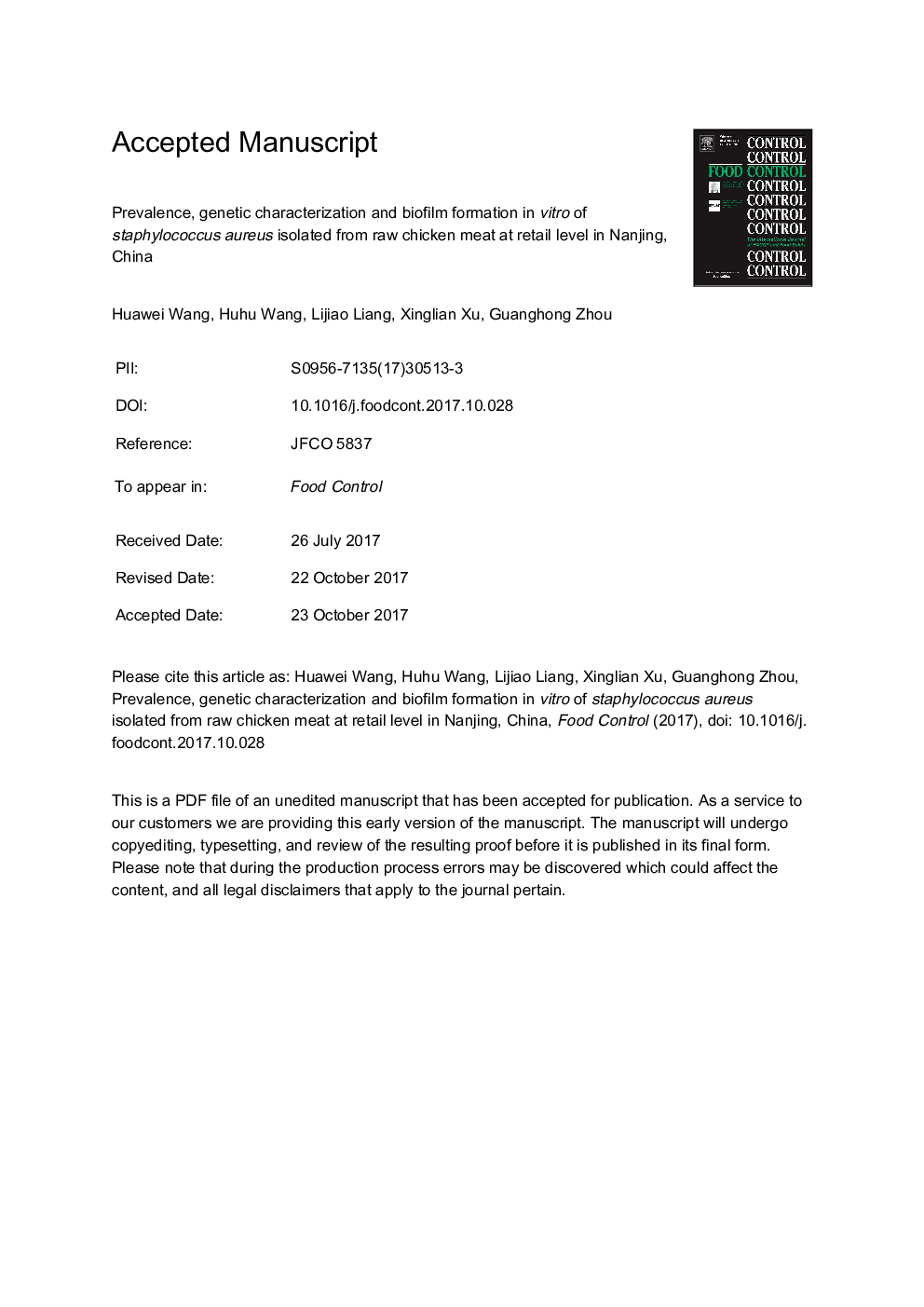| Article ID | Journal | Published Year | Pages | File Type |
|---|---|---|---|---|
| 8888097 | Food Control | 2018 | 27 Pages |
Abstract
Staphylococcus aureus is widespread in animal-origin food, particularly for raw chicken meat products because of the direct exposure and cross-contamination at the breeding, slaughtering and processing, transporting, storing and marketing stages. This study aims to determine the S. aureus prevalence, antibiotic resistance (routine animal used and nosocomial treatment antibiotics) and genetic characterization (e.g. frequently used molecular typing methods for Staphylococcus aureus, enterotoxin series, panton valentine leukocidin, toxic shock syndrome) among various raw chicken meat products. In total, 464 raw chicken meat products were collected in a variety of conditions: from local supermarkets and wet markets; between summer and winter; of cut and whole carcass product types; stored at both low temperature and room temperature; and in both packed and unpacked states. The overall prevalence of S. aureus was 11.5%, contamination level of S. aureus among different products types maintained 102-104 CFU/g, clonal complex (CC)5 was the most common CC in various products (74.2%); every sequence type (ST) corresponded to a single spa type, remarkably, spa typing did not show further discrimination based on MLST. Toxin genetic distribution showed the existence of diverse atypical enterotoxin genes, sea, pvl and tst as classical and critical toxin factors were absent in these isolates. Whereas, penicillin- and tetracycline-resistant isolates were common in products with skin, cuts, particularly, extremely strong biofilm formation isolates were found in products with skin. Our investigation indicates that cutting process and packing were the key factors for the contamination of S. aureus, suggesting a possible critical control points in processing and marketing stages. Though a relatively low toxin genetic existence suggests low virulence, routine antibiotic resistance and high biofilm formation existence raise the need for concern over possibility of human infection.
Keywords
Related Topics
Life Sciences
Agricultural and Biological Sciences
Food Science
Authors
Huawei Wang, Huhu Wang, Lijiao Liang, Xinglian Xu, Guanghong Zhou,
